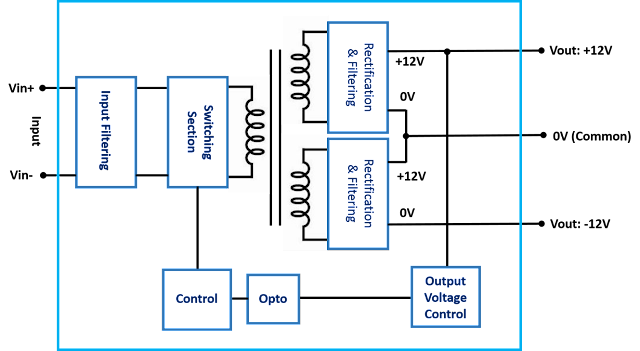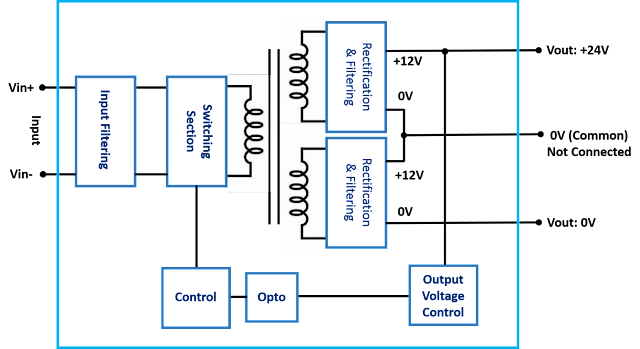Can a dual output DC-DC converter provide a single output?
November 18, 2018
Yes, many dual output DC-DC converters can actually be used to provide a higher voltage, single output.
Figure 1 shows a simplified block diagram of the TDK-Lambda’s CCG +/-12V dual output converter. Two transformer secondary windings are rectified and filtered to provide two 12Vdc voltages and are connected together, effectively in series. Internally the 0V of the upper circuit is connected to the +12V of the lower circuit and this point is supplied to the user as the 0V or common connection. This provides a +12V and a -12V output to the user.

If a single 24V output voltage is needed, a dual output converter can be used as shown in Figure 2.

Internally nothing has changed, there are still two 12Vdc voltages connected in series. If the common terminal is not connected to the user’s circuit, the converter can now provide a 24V single output.
Note the maximum available output current remains the same as the maximum output current of the dual output converter. For example the 30W CCG30-24-12D is rated at +/-12V +/-1.25A, meaning it is capable of supplying +12V at 1.25A and -12V at 1.25A or if connected as a single output, 24V at 1.25A (30W).
Likewise a dual output +/-15V converter can be configured to supply 30V.
Always confirm with the manufacturer if their datasheet does not state it can be used as a single output.





